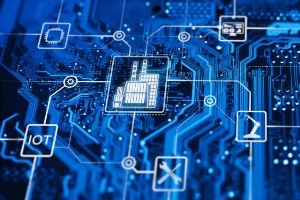Real-time, technology-driven strategy has become the cornerstone of planning and deploying a successful supply chain, while forecasting potential disruptions for virtually any product category. As the price of sensors has come down over time, says Bryn Lowry, VP of customer success at Cloudleaf, implementing IoT devices has been a massive accelerator for this endeavour.
Still, organisations across industries have yet to fully map out how to best integrate the Internet of Things (IoT) and other data sources into the supply chain for their businesses. More than half of enterprises rely on internal and outdated datasets to recreate a virtual view of their supply chains, leaving them prone to risks, human error and vulnerabilities
With the wide range of IoT sensors available on the market, selecting the right IoT sensor for an organisation’s specific needs can often be a complex process. Furthermore, enterprises that rush to implement new IoT technologies solely to check the box of digital transformation run the risk of investing in solutions that fail to improve their supply chains. To increase efficiencies and maximise their return on investment (ROI), these are the 10 factors that enterprises must consider before deploying an IoT sensor:
- Goals: Establishing primary business goals will help balance decisions across all other considerations in this process. If the main goal is to increase customer satisfaction, organisations should consider providing customers with real-time insights on the status of their products, including location and estimated time to arrival. Similarly, if the objective is to make sure that assets are being transported safely, companies should select an IoT device that grants them insights into the condition of their products in real time.
- Value: Organisations can determine the value of a sensor by mapping what they need to measure for success in their supply chain against how the functionality of a given sensor can help them measure it. A sensor’s ability to measure real-time temperature is a critical capability in pharmaceutical and food supply chains, while the capability of measuring tilt or shock may be valuable when shipping high value or fragile products. Customers place a high value on these insights, especially if they can access it at their convenience.
- Accuracy: The level of measurement accuracy differs across each use case for sensors, particularly as many assets require tight conditions that can’t be exceeded. For instance, biomedical materials that require cold chain storage must be kept within FDA-mandated excursion threshold when pallets are transferred to a cold room for sorting. Leveraging sensors to gather data on the temperature and condition of their assets can help companies maintain compliance and reduce the frequency of temperature excursions when products are being investigated or moved.
- Setting: The environment being measured plays an essential role in criteria for selecting the optimal sensor. If a shipment will be travelling outside, the container must be sturdy enough to withstand water, dust and shock. Additionally, if the assets are temperature sensitive, they may require either extreme hot or extreme cold storage.
- Structural design: Because sensors significantly vary in size and shape, companies need to know the maximum size their sensor can be for their particular products. For example, sensors that attach to pallets must be smaller in size than sensors that attach to containers.
- Geographic range: Enterprises must identify the range of their operations in the end-to-end supply chain and determine if the sensor will maintain connectivity across those areas. Sensors deployed in larger regions may require cellular connectivity, while those in smaller areas may only require Bluetooth Low Energy. Many companies may even benefit from a combination of these sensors, rather than paying the price of many disparate cellular sensors. Enterprises must also identify what method of transportation their assets need, such as air, sea, or land, as not every sensor is suitable for every type of transportation.
- Power efficiency: For power optimisation, enterprises must determine the length of time they need to track their assets, how often their data must be shared on their visibility platform and if they require location accuracy. Some location tracking methods, such as cellular tower triangulation, consume significantly less energy compared to other methods like GPS tracking, however they may not be as precise. Additionally, many rechargeable sensors might not work with assets that are far away for long durations.
- Price optimisation: The decreasing cost of sensors introduces many new use cases, however organisations must still consider profitability and rationalise cost. For example, opting for a sensor that is more durable and doesn’t require frequent hardware upgrades or replacements is a more cost-effective decision in the long run. Additionally, a reusable sensor coupled with reverse logistics can enable a single sensor to work for multiple journeys, resulting in added cost savings.
- Hardware and software: To fulfill the requirements of an optimal sensor, it’s important to consider what type of additional hardware and software is needed for optimal data readout. Modern software solutions can help seamlessly integrate data from existing and future sensors as well as relevant third-party data like weather and traffic, enabling enterprises to create a dashboard for holistic real-time view of their supply chains. What’s more, sensor and data agnostic platforms can enable companies advance their technology strategy without having to rip and replace existing investments.
- Administrative management: Knowing how to administer sensors is a key consideration that is often overlooked. With the increasing variety and volume of available IoT devices in the marketplace today, organisations must ensure that they have a centralised and user-friendly way to implement and monitor the health of their sensors. Fortunately, this can be accomplished by pairing the right sensor with the right visibility platform.

The right sensor can provide an organisation with crucial insight that drives greater efficiency, better customer engagement, a lower total cost of ownership and increased ROI for supply chain executives. Sorting through the options on the market today can feel like an impossible task.
However, by asking the right questions of IoT providers and linking sensors to a holistic central source, companies can architect a reliable and scalable supply chain strategy that will prepare them for any challenge that comes their way.
The author is Bryn Lowry, VP of customer success, Cloudleaf.
Comment on this article below or via Twitter: @IoTNow_OR @jcIoTnow










